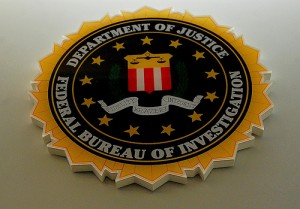SANTA ANA, CALIFORNIA
The CEO of a now-closed real estate firm was found guilty on Friday of fraud that ended in $169 million bankruptcy, according to authorities.
Hundreds of investors lost as much as $169 million, including a 74-year-old investor who said she was persuaded to invest all her retirement saving to Pacific Property Assets.

The Property Assets owner and CEO Michael J. Stewart, 68, who resides in San Clemente, was found guilty Friday of 11 counts of mail fraud following a nine-day jury trial in federal court.
Stewart owned and was the chief executive of Property Assets, which had offices in Long Beach and Irvine. Along with co-defendant John Packard, Stewart created Property Assets in 1999 to purchase, renovate, operate, and resell or refinance apartment complexes in Southern California and Arizona.
Typically, Property Assets financed property acquisitions through mortgages, and it raised money from private investors to pay for renovations to the properties. After several years, Property Assets would refinance (or sometimes sell) each property, according to authorities.

Although Property Asset’s apartment rental operations were not profitable, it was able to raise cash through refinancing and selling properties.
As real estate values were generally increasing until approximately 2007, the properties were refinanced at ever-higher values, which enabled Property Assets to use the extra refinancing proceeds to not only pay off the original mortgages, but also to make payments on other loans, make payments to investors, to pay other business expenses, and to pay Stewart and Packard, according to officials.
In its 10 years of operations, authorities said Property Assets acquired more than 100 real estate properties and raised hundreds of millions of dollars from hundreds of investors.
Stewart told prospective investors that from 2004 to 2007, Property Assets was named three times to Inc. magazine’s list of the fastest growing privately held companies in the United States.
 He also said the company was a regional finalist in Ernst & Young’s Entrepreneur of the Year Program, and was listed by the Orange County Business Journal as one of fastest growing businesses in Orange County
He also said the company was a regional finalist in Ernst & Young’s Entrepreneur of the Year Program, and was listed by the Orange County Business Journal as one of fastest growing businesses in Orange County
The government, however, argued at trial, by the end of 2007, when the real estate market began to decline and credit became scarce, Property Asset’s business model was no longer feasible.
As the value of Property Asset’s properties was falling, Property Assets could no longer raise money by refinancing its properties with increasingly large mortgages or selling properties at a profit.
Furthermore, officials said Property Assets faced large debt payments to its mortgage lenders and private investors, while it was continuing to lose money in its business operations.
 In May 2008, Property Asset’s Controller warned Stewart and Packard that without a new source of funds, Properties Assets faced losing as much as $2 million dollars per month, and emails between the owners revealed that they projected that trend to continue, according to authorities.
In May 2008, Property Asset’s Controller warned Stewart and Packard that without a new source of funds, Properties Assets faced losing as much as $2 million dollars per month, and emails between the owners revealed that they projected that trend to continue, according to authorities.
To keep Property Assets afloat, from early 2008 through April 2009, Stewart and Packard raised more than $34 million dollars from new investors, many of them elderly and retired persons investing their retirement funds in the company.
For example, officials said one 74-year-old investor testified at trial that in early 2009, shortly after her husband passed away, Stewart’s staff persuaded her to invest virtually all her retirement savings in Property Assets.
The defendants used those new funds to pay earlier investors, mortgage lenders, other company expenses, and Stewart and Packard themselves – including annual salaries for the two co-owners of $750,000 and hundreds of thousands of dollars in additional compensation.
Packard testified at trial that in 2008, he and Stewart knew that Property Assets was dependent on these investor loans to make its monthly debt payments and continue operating, and was unable to raise money through other means. Property Asset’s former Director of Investor Relations further testified that during that period, Stewart began to pressure her and others to raise more money from investors.
Evidence introduced at trial also showed that Stewart misrepresented Property Asset’s financial condition, claiming that its business model was still working, and that PPA was still financially stable and able to raise money through refinancing.
In particular, Stewart created and provided to investors fraudulent financial statements, claiming that Property Assets had made millions of dollars in income in the first half of 2008 (it had actually lost millions), and Stewart arranged with Packard to temporarily deposit $2 million dollars into a company bank account to make the company’s cash position look stronger for investors, then quickly withdrew the funds from the account without reflecting the withdrawal in the balance sheet given to investors.
Stewart and Packard also concealed from investors the fact that the business had effectively become a Ponzi scheme, using funds from new investors to pay back earlier investors.
In the last investor offering in early 2009, known as the Opportunity Fund, Stewart told investors that their funds would be used to purchase new real estate properties. In fact, none of the over $9 million raised was used for that purpose.
Instead, the money was used to pay earlier investors and banks, to pay Stewart and Packard, and to pay Property Asset’s bankruptcy attorney, officials said.
 Stewart continued to raise money from investors until late April 2009, when he abruptly informed investors that Property Assets was suspending their monthly interest payments.
Stewart continued to raise money from investors until late April 2009, when he abruptly informed investors that Property Assets was suspending their monthly interest payments.
Several investors testified at trial that even in mid-April 2009, after Property Assets had begun to default on some of its bank and investor loans, Stewart personally solicited investments from them in the Opportunity Fund, claiming that Property Assets was financially sound and their funds would be used for new real estate projects
Property Assets and a group of related companies filed for bankruptcy in June 2009. When the bankruptcy was filed, Property Assets stated that it owed 647 private investors more than $91 million, and it owed banks approximately $100 million.
The Chapter 11 trustee appointed in the bankruptcy case later estimated the total investor losses at $169 million, and predicted that investors would receive, at best, “pennies on the dollar” through the bankruptcy process, according to officials.
Stewart, who was remanded into custody following Friday’s verdicts, faces a statutory maximum sentence of 18 years and four months in federal prison when he is sentenced on Nov. 2.
Property Assets’ co-owner Packard pleaded guilty to one count of mail fraud in November 2014 and is scheduled to be sentenced Nov. 9.

